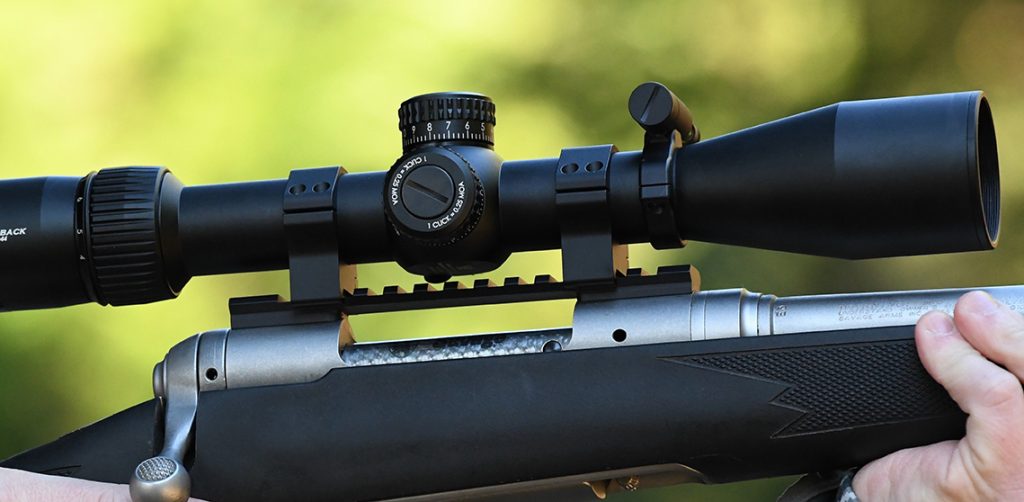Understanding the Difference Between 0 MOA and 20 MOA Picatinny Scope Rails
When choosing a Picatinny scope rail for your rifle, one of the most important — and sometimes confusing — decisions is whether to go with a 0 MOA or a 20 MOA rail. Both serve the same purpose: to provide a secure, level mounting surface for your riflescope. However, the difference lies in the built-in slope of the rail, which has a direct impact on your elevation adjustment range and the distances you can shoot.
In this blog, we’ll break down exactly what MOA means in this context, how 0 and 20 MOA rails differ, and which is best suited for your shooting style and goals.
What Is MOA in Scope Rails?
MOA stands for Minute of Angle — a unit of angular measurement used in shooting. One MOA equals 1/60th of a degree, or roughly 1 inch at 100 yards. When used in the context of scope rails, MOA refers to the amount of downward slope (or elevation bias) built into the rail.
A 0 MOA rail is completely flat, while a 20 MOA rail has a slight forward tilt, meaning the front of the rail is lower than the rear by a very small amount — approximately 0.7mm across the length of the rail.
Why Slope Matters: Elevation Adjustment
Scopes have a limited amount of internal adjustment, typically measured in MOA or MILs. For example, a scope might offer 100 MOA of total vertical adjustment. If you mount it on a 0 MOA rail and zero your rifle near the center of its range, you’ll have about 50 MOA up and 50 MOA down to work with.
But here’s the issue: in most real-world scenarios, you rarely need downward adjustment. Once your rifle is zeroed, all your adjustments are generally upward — especially for long-range shooting. That means half your scope’s internal adjustment is essentially wasted.
This is where the 20 MOA rail comes in.
By tilting the scope slightly forward, a 20 MOA rail shifts your scope’s usable adjustment range upward, allowing you to dial in more elevation for those long shots. Using the same 100 MOA scope example, mounting it on a 20 MOA rail effectively shifts the range so you may now have 70 MOA up and 30 MOA down.
0 MOA Scope Rails: When to Use Them
0 MOA rails are ideal for:
- Short- to mid-range shooting (e.g. under 500–600 metres)
- Hunting rifles where long-range adjustment isn’t critical
- Rifles with lower-power optics that have limited internal adjustment
- Rimfire rifles or low-recoil centerfire setups
- Shooters who want to maintain zero at close ranges (100m or less)
Because there’s no tilt in the rail, zeroing at closer distances is simple and well within the scope’s available elevation range.
20 MOA Scope Rails: When to Use Them
20 MOA rails are designed for:
- Long-range precision shooting
- PRS (Precision Rifle Series) competitors
- F-Class or tactical shooters looking to shoot 800+ metres
- Rifles with long-range scopes that offer generous elevation adjustment
- Shooters wanting to maximize the scope’s usable elevation
By adding slope, you unlock more upward adjustment — crucial when stretching out to 1000 metres or beyond. Most quality long-range scopes are built with 20 MOA rails in mind, and will have no problem zeroing at 100 or 200 metres.
Will I Still Be Able to Zero My Rifle with a 20 MOA Rail?
This is a common concern, but in most cases, yes — you’ll still be able to zero your rifle at 100m with a 20 MOA rail, especially if you have a quality scope with at least 60 MOA of total adjustment. The key is to check your scope’s available elevation range and how much adjustment is available in each direction.
If your scope has limited adjustment (e.g. 40 MOA total), you may run into issues zeroing at close distances with a 20 MOA rail. In those cases, a 0 MOA rail may be the better choice.
Is There a Big Height Difference Between 0 and 20 MOA Rails?
Technically, yes — the front of a 20 MOA rail is about 0.7mm lower than the rear. But in practical terms, this is barely noticeable and has no impact on your cheek weld or scope height. The purpose of the slope is purely for optical alignment and adjustment — not physical height.
Which One Is Better?
It depends on your shooting application:
| Application | Recommended Rail |
| General-purpose or hunting rifle | 0 MOA |
| Rimfire or short-range rifle | 0 MOA |
| Target shooting (up to 500m) | 0 MOA |
| Long-range (600m+) | 20 MOA |
| Precision rifle setup | 20 MOA |
| PRS / Tactical competition | 20 MOA |
Final Thoughts
Choosing between a 0 MOA and a 20 MOA Picatinny rail is all about knowing your rifle’s purpose. If you’re setting up for long-range or precision work, a 20 MOA rail gives you a significant edge in scope performance. If your shooting is mostly at closer ranges, a 0 MOA rail is simpler and more forgiving.
Still unsure? Check your scope’s total elevation adjustment and consider the distances you plan to shoot. And if you’re building a new rifle, it’s always a good idea to choose a rail that gives you room to grow — especially if long-range shooting is in your future.

